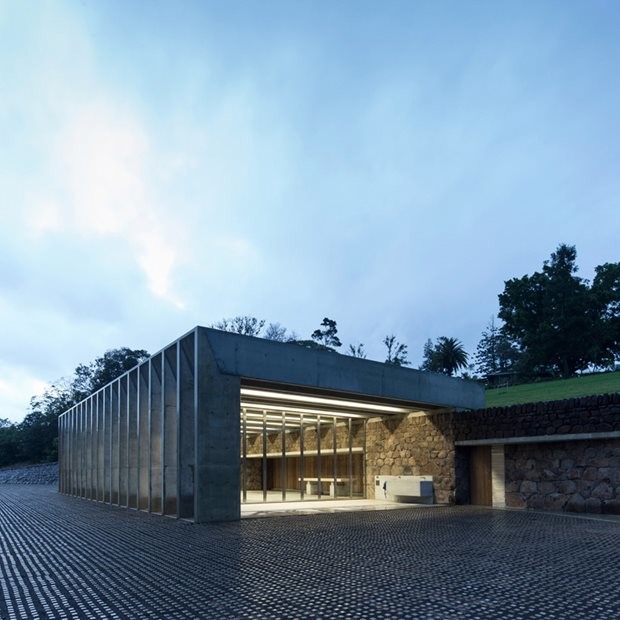Australian architecture firm, CHROFI have received one of three runners-up prizes at the 2014 Architecture Review (AR) Awards for Emerging Architecture for their Lune de Sang Sheds project in northern NSW.
Now in its 16th year, the AR Award is cited as the world’s leading awards programme for emerging architects and previous recipients have included the likes of Sou Fujimoto (Japan), Thomas Heatherwick (UK), Jurgen Mayer H. (Germany) and Li Xiaodong (China).
The prizes were presented at an awards ceremony held at the Royal Academy of Arts, London. CHROFI were one of four selected from 250 entries around the world to share the prize fund of £10,000. CHROFI said they were delighted and honoured to receive the prize.

Read more about the above Shed 1 the rest of the Lune de Sang project below. Image: Brett Boardman.
Below: Boundary Window House by Shingo Masuda+Katsuhisa Otsubo Architects transformed an old apartment building into a single residence complete with an entirely glass and aluminium mullion façade and massive draping curtains.

Japan’s Shingo Masuda+Katsuhisa Otsubo Architects were announced this year’s winner, with their Boundary Window project, a conversion of a three-apartment property into a single-family holiday house, earning them the prize.
Other runners-up were Mexican architects CC ARQUITECTOS / MANUEL CERVANTES CESPEDES, for their refurbishment of a Mexican equestrian centre and Chinese firm Atelier Deshaus for their Long Museum West Band project in Shanghai.

Above: Atelier Deshaus re-adapted the existing cantilever structure at Shanghai’s Museum West Band to create what they call a “vault-umbrella” structure. Image: Su Shenglian.
Below: the private equestrian centre by CC ARQUITECTOS / MANUEL CERVANTES CESPEDES includes 20 horse stables and a riding ring; 4 suites, terraces and resting spaces. Image: Iwan Baan.

ABOUT LUNE DE SANG SHEDS
‘Lune de Sang’ is a 92 hectare logging plantation near Byron Bay in northern New South Wales and the ‘Sheds’ are a pair of industrial workspaces that will be used to store and service machinery for the plantation.
The first of the sheds, Shed 1, comprises 19 in situ concrete ribs that rise out of the sloping hill and move on a 90 degree angle before resting on a stone pioneer wall. The divides in the ribs are joined by glazing which allows natural lighting into the space and offer a variety of framed views of the surrounding landscape. Operable glass doors to the north and south completely close Shed 1.



Just down the service road, Shed 2 saw CHROFI adopt an almost reverse design approach to Shed 1 by countersinking its 20 metre long concrete roof beams into the embankment behind rather than on the hill in front. This meant that the roof could cantilever by 11 metres and appear to float above the hardwood shell that wraps the building. The external walls are completely operable and can unfold to facilitate materials handling and storage for the farm.


The Sheds are only one part of the property owner’s masterplans for the site. Stone House, a transformed rural cabin also designed by CHROFI, was recently completed on the site and earned the firm the Hugh and Eva Buhrich Award for Residential Architecture – Houses (Alterations & Additions) in the 2014 NSW Architecture Awards.


All images from Brett Boardman unless stated otherwise.

